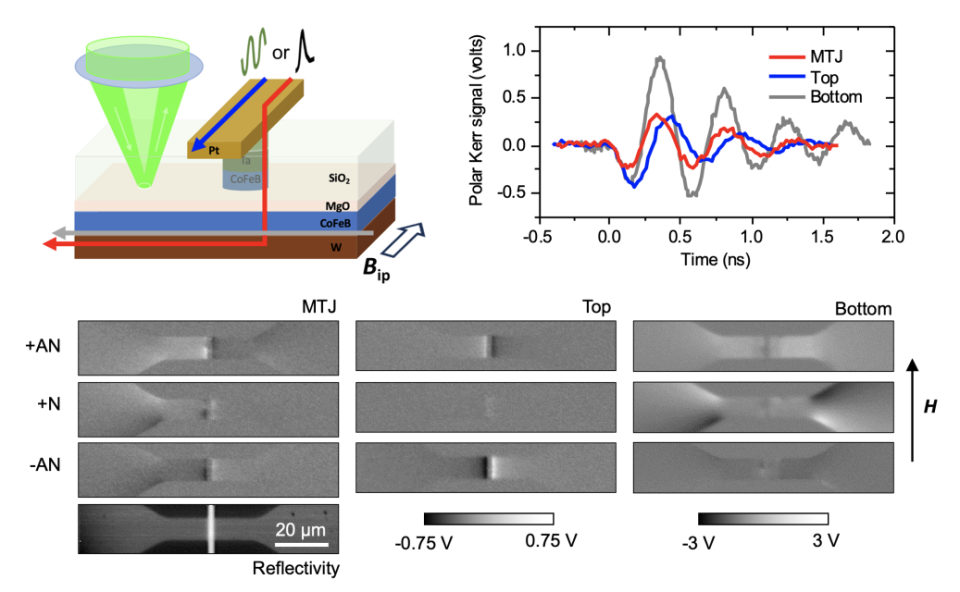A magnetic tunnel junction (MTJ) is composed of two thin ferromagnetic layers separated by a non-conductive insulating barrier, typically made from materials like magnesium oxide (MgO). The key feature of an MTJ is its ability to leverage quantum tunneling, where electrons can pass through the insulating layer if the thickness is sufficiently thin. The resistance across the MTJ depends on the relative orientation of the magnetizations in the two ferromagnetic layers: when aligned parallel, the resistance is low, and when antiparallel, the resistance is high. This phenomenon, known as tunneling magnetoresistance (TMR), allows MTJs to function as sensitive magnetic switches or data storage elements. MTJs are foundational in spintronic applications such as magnetic random access memory (MRAM), magnetic sensors, and advanced logic devices, offering advantages like non-volatility, high-speed switching, and low power consumption. They are crucial for creating energy-efficient and high-performance memory systems in modern computing.
The article "Magnetization dynamics driven by displacement currents across a magnetic tunnel junction" by C.K. Safeer et al., offers a fresh view of MTJs by investigating them as a capacitive structure, rather than just focusing on their resistive tunneling behavior. Traditionally, MTJs are seen as devices where the tunneling current, driven by an external voltage, determines the magnetic state through spin-polarized electrons. However, this study highlights the role of displacement currents, which arise from time-varying electric fields across the insulating barrier, in driving magnetization dynamics. By analyzing the MTJ from this capacitive perspective, the authors reveal that magnetization can be influenced by electric fields without the need for direct charge flow. This paradigm shift introduces a new mechanism for manipulating magnetization, potentially reducing the energy required for switching magnetic states. This capacitive interaction could pave the way for more energy-efficient spintronic devices, as it allows for electric field control of magnetic properties, offering an alternative to current-driven magnetization control methods.
This project was in collaboration with Extremag-University of Exeter (UK), CIC nanoGUNE-San Sebastian (Spain), AGH University-Karkow (Poland), AIST-Tsukuba (Japan), and Western Digital-San Jose (USA)

